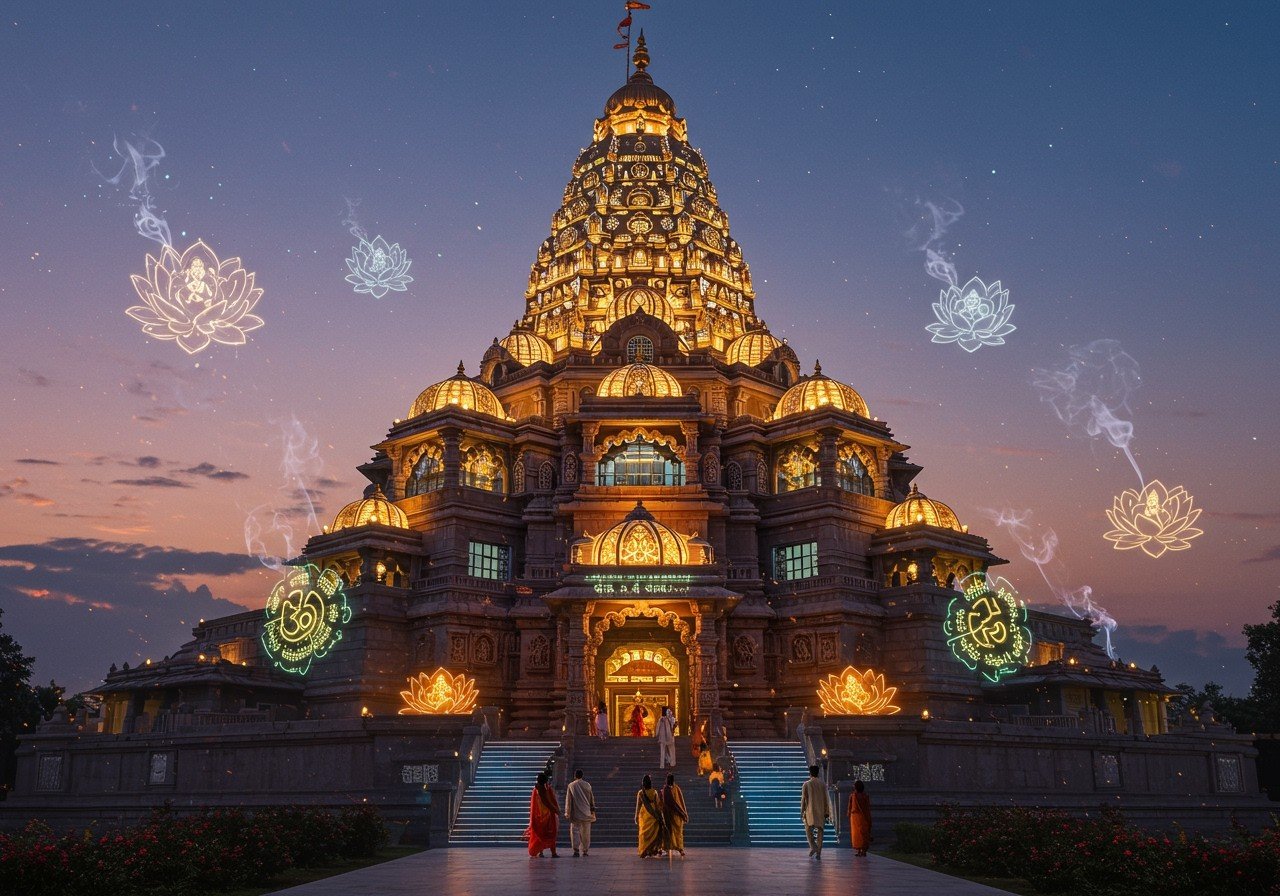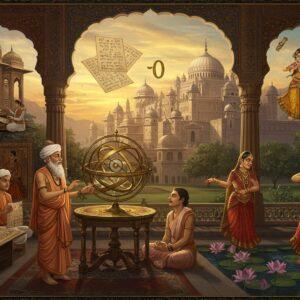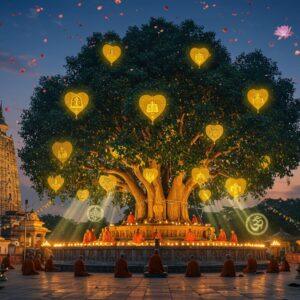
In India, the concept of Sanskritisation has profoundly shaped our society. This term, coined by sociologist M.N. Srinivas, describes the fascinating process where communities adopt the customs and practices of higher castes, often Brahmins, as a means of social mobility. One area deeply touched by this cultural phenomenon is temple architecture. This blog post delves into how Sanskritisation has impacted temple design, rituals, and regional styles, offering a glimpse into its continuing relevance in 2025.
A Historical Journey: Sanskritisation and Temples
Sanskritisation’s roots run deep within Hindu society. Historically, it reflects the aspirations of various communities seeking to elevate their social standing by emulating higher-caste customs. This cultural assimilation has significantly molded the evolution of Hindu temple architecture. From the earliest rock-cut caves to the magnificent temples we see today, designs have gradually integrated Brahminical elements over centuries. This fascinating process led to a degree of standardization in architectural styles across India, while still allowing for beautiful regional variations. Understanding this rich history allows us to appreciate how Sanskritisation has both unified and diversified the landscape of temple architecture.
The Architectural Tapestry: Styles Shaped by Sanskritisation
Sanskritisation has undeniably enriched Hindu temple architecture, adding layers of grandeur and meaning to its design. When we speak of temple styles, three primary forms come to mind: Nagara, Dravidian, and Vesara. Each style carries its own unique narrative while reflecting the subtle yet profound influence of Brahminical traditions.
-
Nagara (North India): Characterized by the elegant curvilinear shikharas (towers) that grace the sanctum, Nagara temples often stand on raised stone platforms, reached by a flight of steps. Symmetry plays a vital role, and smaller shrines often dot the temple grounds. The towering shikharas, resembling beehives, symbolize the spiritual aspirations of communities seeking higher social and spiritual status. This style showcases the integration of Brahminical elements into the very structure of the temple.
-
Dravida (South India): With their majestic pyramidal towers (vimanas), monumental entrance gateways (gopurams), and surrounding water tanks, Dravidian temples evoke a sense of awe. The intricately carved pillars and gopurams speak volumes about the artistic excellence inspired by Sanskritisation. Enclosed within compound walls, these temples echo the elegance of the Chola period and the grandeur of the Vijayanagara era, reflecting the deep-rooted Brahminical traditions that shaped their design.
-
Vesara: Bridging the north and south, the Vesara style, primarily found in Karnataka, seamlessly blends elements of both Nagara and Dravidian architecture. This fusion represents the cultural exchange fostered by Sanskritisation, resulting in diverse yet harmonized architectural expressions. The Vesara style stands as a beautiful example of how different architectural influences can coexist and enrich one another.
Across these styles, common elements like the Garbhagriha (sanctum sanctorum), Mandapa (pillared hall), and Shikhara/Vimana highlight the pervasive influence of Brahminical traditions. These features underscore the deep connection between Sanskritisation and the evolution of temple design across India.
Rituals and Practices: The Sanskritic Influence
Beyond architecture, Sanskritisation has also shaped temple rituals and practices. Across India, rituals like Aarti, Abhishekam, and Pradakshina have become central to temple worship. The use of Sanskrit chants and hymns during these ceremonies reflects the Brahminical influence, creating a sacred ambiance within the temple. Temple priests, often from Brahmin communities, play a vital role in maintaining these rituals, ensuring they are performed with utmost reverence and precision. This standardization of practices across different regions demonstrates Sanskritisation’s impact on harmonizing religious observances.
Explore our collection of Puja Samagri at Poojn.in
Regional Nuances: A Tapestry of Traditions
Despite the unifying influence of Sanskritisation, regional variations in temple architecture continue to flourish, adding to the rich tapestry of Indian culture. For instance, temples in Kerala, with their sloping roofs made of terracotta tiles, are uniquely adapted to the region’s heavy monsoons. The influence of local deities and folklore lends a distinct charm to these structures. In Odisha, intricate stone carvings narrate mythological stories, blending Brahminical and local artistic traditions. Similarly, Rajasthan’s temples showcase regional craftsmanship through vibrant frescoes and jharokhas (balconies). These regional adaptations demonstrate how local customs beautifully coexist with Brahminical elements introduced through Sanskritisation, enriching the diversity of Hindu temple architecture.
Find beautiful temple décor items at Poojn.in
Looking Ahead: Sanskritisation in the Modern Age
Even in 2025, the influence of Sanskritisation on temple architecture remains significant. As we navigate the complexities of modernization and urbanization, efforts to preserve traditional architectural styles continue. Technology now plays a crucial role in promoting awareness and appreciation of temple architecture, particularly among younger generations. Digital platforms offer virtual tours and educational resources, bridging the gap between tradition and modernity. Community involvement is essential for sustaining the cultural and spiritual significance of temples, ensuring that they remain vibrant centers of faith and heritage. The future of temple architecture lies in balancing traditional designs with modern needs. As urban spaces evolve, innovative architectural solutions are emerging that accommodate growing populations while preserving cultural identity. This delicate balance reflects the enduring legacy of Sanskritisation in shaping Hindu temple architecture for generations to come.
Poojn.in: Supporting Your Spiritual Journey
At Poojn.in, we understand the deep significance of temple rituals and architecture. We offer a wide range of authentic products that cater to your spiritual needs:
For Temple Worship:
- Pure brass and copper bells
- Traditional oil lamps (deepams)
- Sacred thread (janeu)
Shop for lamps and other flammables for your puja at Poojn.in
Architectural Elements:
- Copper kalash for temple spires
- Brass door frames with Sanskrit symbols
- Traditional temple flags
Browse our selection of architectural elements at Poojn.in
Ritual Needs:
- Complete puja thalis
- Sanskrit prayer books
- Copper vessels for abhishekam
Find everything you need for your rituals at Poojn.in
Visit us at www.poojn.in or contact us at 03369029784 or WhatsApp us at 9476142738.
We offer authenticity certificates, nationwide delivery, and special discounts for bulk orders.
Conclusion: A Timeless Legacy
In 2025, Sanskritisation continues to be a guiding force in the evolution of Hindu temple architecture. Its influence is woven into the intricate designs, spiritual practices, and cultural significance of temples across India. Each temple, whether in the north, south, or central regions, stands as a testament to the beautiful blend of tradition and innovation. Preserving these architectural treasures while embracing modernity is a vital task. By engaging communities and leveraging technology, we can ensure that the timeless beauty and spiritual essence of Hindu temples continue to inspire generations to come. Through Sanskritisation, we celebrate a legacy that unites diverse traditions and enriches the cultural tapestry of India.


